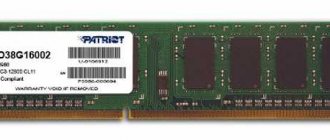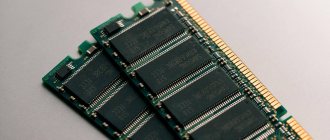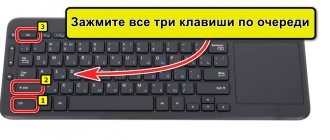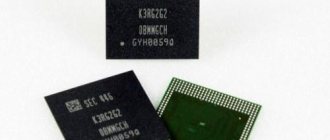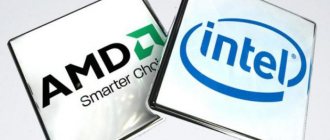What it is?
RAM (random access memory) or RAM is a part of a computer component system designed for temporary (as opposed to ROM - permanent storage) storage of various types of data.
RAM is volatile. This means that after a power failure (disconnecting the device from the mains), all information from the RAM disappears. RAM is used by the computer's central processor to process incoming, outgoing, and intermediate data.
Simply put, all programs (including system ones) that run on a PC (laptop, tablet) at a given time use RAM in one way or another.
RAM allows you to significantly increase the speed of your computer due to the ability to unload part of the data into the cache. That is, this or that program works with information that is stored on the hard drive (non-volatile permanent memory), the process of reading data from a mechanical device is quite slow, so the data is uploaded to RAM.
Externally, RAM is a small flat strip that is installed in special slots on the computer motherboard.
Frequency and delays
First of all, let's talk about memory frequency and latency. Each DDR memory module's base frequency is half its data rate. Since DDR literally means double data rate, all the numbers you see on RAM modules are their data rates, not frequencies. For example, DDR4 3600 MHz actually runs at 1800 MHz. But it behaves as if its operating frequency was 3600 MHz because other components can access its data twice every cycle.
In fact, every RAM module works this way. So, when you see a 4000 MHz DDR4 RAM module, its actual operating frequency is 2000 MHz. There's nothing wrong with referring to memory speed in megahertz. This is because each RAM module in practice runs twice as fast as its actual operating frequency. While memory frequency represents the number of times components can access memory per unit time (one second), latency is a measure of the time required to begin a memory operation.
There are primary, secondary and tertiary time. While secondary and tertiary timings can affect performance, primary timings have the greatest impact on performance. The main timing labels are: CAS delay (tCL), RAS to CAS delay (tRCD), row precharge time (tRP) and row active time (tRAS). The most important of these is CAS latency. It is a measure of the time required by memory to respond to an access request. We can calculate the CAS latency by dividing the frequency in half (the advertised frequency). We then divide the number 1 by the result and finally multiply the final result by the CL timings.
For example, if we have 4000 MHz DDR4 memory with CL 17 timing, the CAS latency calculation would be as follows - remember that the base frequency is displayed in cycles per second, which translates 4000 MHz into 4000000000 hertz, since 1 MHz equals 1000000 Hz -: (1 / (4,000,000,000 / 2)) * 17 = (1 / 2,000,000,000) * 17 = 0.0000000005 * 17 = 0.0000000085
The result is displayed in seconds, which corresponds to 8.5 nanoseconds. The CAS latency of DDR4 3200 MHz memory with CL16 timings is 10 nanoseconds. This means that faster memory with lower CL timings has lower CAS latency than slower memory with higher timings. In other words, lower timings do not always lead to better performance. Faster memory may have weaker timings. But it will still be faster than slower memory with tighter CL timings. The CAS delay is the most important of the four major delays. You can learn more about others in this memory lag guide from Gamer's Nexus.
Now that we've explained memory frequency and CAS latency, let's talk about how much faster memory impacts the performance of Intel and AMD processors.
Difference between RAM and ROM
A hard disk (ROM) is a permanent storage of data, but the speed of managing this data is not enough for the normal operation of the machine. Imagine yourself as a chef preparing a certain dish. You have a huge warehouse with various products. But in order not to run far and not look for the necessary products in this whole heap, you selected them and put them on your table. It turns out that the table is your RAM, and the warehouse is your hard drive.
The work of a computer is built in this likeness. The processor loads everything it needs into temporary RAM, which is much faster than the HDD. Due to this, the performance of the computer increases.
How memory frequency can affect the performance of Intel and AMD processors
In terms of performance, AMD Ryzen processors can benefit significantly from faster memory. This is because AMD processors use Infinity Fabric (IF) technology. Infinity Fabric manages communication between the processor and other components. Until Ryzen 3000 IF series processors and memory frequencies were tied together. On 1st and 2nd generation Ryzen processors, less memory used also meant lower Infinity Fabric frequencies. This resulted in much lower performance when using slower memory. This also resulted in many RAM modules not working with Ryzen processors.
But with the launch of the AMD 3000 processors, AMD allowed the Infinity Fabric frequency to not match the memory frequency in a 1:1 ratio. Now you can separate the two frequencies. And while this works, it introduces additional delays since the two frequencies are not perfectly synchronized. Of course, you can leave the Infinity Fabric frequency on auto. This means that its frequency will vary depending on the memory frequency used to maintain a 1:1 ratio, resulting in zero additional latency.
Now you can use any memory you want (as long as it's DDR4), even memory over 3200 MHz, the fastest memory officially supported by AMD processors. The fastest memory that can support a 1:1 clock ratio is DDR4 3600 MHz. When Infinity Fabric is overclocked to 1900 MHz, the fastest memory to maintain a 1:1 ratio becomes DDR4 3800 MHz. The results show that even slower 2133 MHz memory can have excellent performance. But only if you overclock the Infinity Fabric and manually lower the underlying timings to eliminate the extra latency caused by not running the IF at a 1:1 ratio with the memory clock.
Your best choice for maximum performance is using DDR4 3600MHz memory. It maintains a 1:1 ratio with the Infinity Fabric clock speed (which defaults to 1800 MHz, which perfectly matches the actual 1800 MHz frequency of 3600 MHz DDR4 memory). Or you can overclock the Infinity Fabric to 1900MHz and then pair it with DDR4 3800MHz memory and keep the clock speed at 1:1. Or use something like DDR4 3722 coupled with an 1866MHz IF clock.
The important thing is that no matter what kind of memory you have, you should reduce the basic timings as much as possible. This is because lower timings improve performance regardless of memory frequency. In the end, the best bang for your buck is going with 3200MHz memory (with CL14 timings, which you can tweak further if you want), as it has the best price/performance gain ratio. And you can maintain a 1:1 memory to Infinity Fabric clock ratio (1600 MHz for memory and IF).
If you have the money, purchasing low latency DDR4 3600MHz memory is the best way to improve performance, but it's not the cheapest. And if you don't have the money for something more expensive than DDR4 2133 MHz, well, buy a kit with low timings. Then try lowering them even further and overclocking the Infinity Fabric to 1900 MHz for best results. And in games, the best results can reach ten percent or even more. It all depends on your GPU and the specific game.
To top off AMD processors, you can achieve the best results by using DDR4 3600MHz memory with lower timings. You can also overclock IF (which has overclocking issues on all models except the Ryzen 9 3900X) and use DDR4 3800 MHz memory. Users of mainstream processors (such as the R5 3600) should get DDR4 3200 MHz. The point is that while low latency DDR4 2133MHz can produce great results, it requires an overclocked Infinity Fabric. And since only more expensive processors can easily overclock IF to 1900 MHz, using DDR4 2133 on these processors does not make any sense.
Intel processors can also improve performance with faster memory. Faster memory can improve gaming performance by about ten percent, depending on the title. But as you can see, overclocking the CPU and cache increases gaming performance almost as much as faster memory (DDR4 4000 MHz CL16 vs. DDR4 3200 MHz CL14).
In other words, it's better to invest in a better processor or a better graphics card than to spend that money on more expensive memory. When it comes to a flagship processor like the 10900K, it's probably better to invest in a powerful AIO cooling system, which will allow for higher overclocking than using memory faster than DDR4 3200MHz. Unless you're on a budget, faster memory combined with a high overclock and a powerful graphics card will give you the best results. But if you don't have enough money for everything, skip the faster memory and invest in cooling and a GPU.
But if you have a non-K Intel processor, there's a catch. You can only use memory faster than 2933 if you pair a 10th gen non-K processor with a Z490 motherboard. The B460 and other 400-series chipsets are limited to DDR4 2666 for non-K i5 and i3 processors, and up to 2933 MHz when running non-K i7 and i9 processors. If you want to use faster memory with non-K processors, you will have to buy a Z490 motherboard. But this doesn't make sense since Z490 boards are much more expensive than other chipsets. You won't get any noticeable performance gains unless you opt for super-expensive memory. By then, it's better to spend the money on a faster processor.
Main characteristics of RAM
From the user’s point of view, when purchasing RAM, you need to focus on its volume, price and manufacturer. But to understand the purpose of RAM in computer operation in general and in games in particular, it is worth understanding all the other parameters.
Volume
Since the RAM contains a lot of information at any given time (data from the hard drive, the cache of various programs, input and output data), sooner or later there comes a time when all this information no longer fits in the RAM.
This is where the system slows down, freezes and unexpected failures begin.
For such cases, there is a paging file on the hard drive that can be configured for different amounts of information, but it does not solve the problem, since accessing the hard drive takes much more time than accessing RAM.
For a gamer, such delays of hundredths of a second can lead to fatal consequences, especially in online shooters and other dynamic games. The player has to wait for the location to load; he does not have time to shoot or dodge the blow. Therefore, in a gaming PC, the amount of RAM is especially important.
It is measured in MB (megabytes) and GB (gigabytes). To play modern computer games comfortably, it is recommended to have at least (preferably more) 4 GB of RAM.
RAM structure
The device consists of many cells. Information may be contained in each of them. They all have:
- an address where you can access any cell;
- content.
Of course, the RAM also has connectors through which it is connected to the PC motherboard.
On the topic: What types of computer RAM are there, types of RAM - a guide in 6 sections
How does it affect RAM in games?
If we take games into account, then there should be a lot of RAM. When the toy is loaded, all data about the location, map and other scenery goes from the HDD to the RAM, and then the video card converts the data and broadcasts it to the monitor screen. If there is not enough temporary memory, the game will simply slow down, or even freeze for a few seconds. Of course, all this will darken the impression of the game, which is why gaming machines are equipped with a large amount of RAM.
Effect of volume
The answer to the question: “What affects the amount of RAM?” - extremely simple. The amount of RAM directly affects the amount of information that the processor will process, and therefore increases the speed of completing all tasks in general.
Effect of frequency
RAM frequency is the speed at which the RAM exchanges files with the processor. And it’s already clear what the speed of RAM affects. Higher speed means faster information processing.
What does type affect?
Each subsequent generation of RAM differs in its characteristics: the frequency and volume increase and the voltage decreases, due to which the board heats up less.
FPS
For many gamers, the number of frames per second, that is, FPS, is not just an important criterion, but also a topic for measuring the size of the belly :) (who has more). In my opinion, this is not such an important indicator.
In a calm state, the nervous system’s reaction to an image is approximately 40 milliseconds, that is, 25 frames per second (yes, 24 frames of a film plus one frame for zombies or advertising).
When excited (and many gamers are excited), the latency drops to 10-15 milliseconds, allowing the brain to process up to hundreds of frames. True, such courage usually does not last long.
Why am I telling this? The optimal FPS for a comfortable game is from 60 to 80 (of course, it can be less, but not much). But for some reason, these same 25 frames in the game are not a particularly rosy picture and are noticeable to the human eye, a kind of sad slideshow. Therefore, the FPS needs to be raised.
But in the case of RAM, this does not always work: tests show that in most games the indicator increases by 1-2, at best 5 points. The exception is the dual-channel RAM mode: here you can squeeze out up to a dozen FPS.
To the question: does doubling the amount of RAM increase FPS, the answer is simple: yes, but not much. Is it worth it?
How to choose RAM for a computer?
- First, you need to think about feasibility. Correlate with the purposes for which you use the PC. Working in text editors and watching movies do not require large amounts of space, and 2GB of RAM will be enough for you, but this will not be enough for games.
- For best results, take planks from the same manufacturer, with matching parameters.
- It is important that the slats have the same operating frequency and timings.
- You should also take into account the bit depth of your OS. For example, you won’t be able to install more than 4 GB of RAM on 32-bit Windows; it simply won’t see it.
Recommendations
In order not to go into detailed explanations once again, I recommend that you read the publication about the types of RAM DDR3 and DDR4: how they differ and which is better.
In this same article, when assembling a computer, I once again advise you to focus on the DDR4 standard - its operating frequency and other characteristics are higher, and in games, as you understand, this is important. As for the amount of RAM (and now we are in 2022), the minimum required to comfortably play a modern game is 8 GB. If the budget allocated for assembling the computer allows, then, for the future, 16 GB is, of course, better.
That's all for me. See you in the next publications and special thanks to those who share articles on social networks and subscribe to the newsletter.
Sincerely, Andrey Andreev
How to understand that there is not enough RAM?
This can be clearly seen in all well-known applications such as the photo editor Adobe Photoshop and any browser. Just start working in the editor with multiple layers or click multiple tabs. The computer will start to slow down.
To check how the RAM works, call the Task Manager (Ctirl + Alt + Del). Click the “Performance” tab and look at the RAM load. Next, we determine where exactly the memory is spent by clicking “Processes”. If necessary, disable unused programs.
Integrated video memory
It’s a different story when the computer uses not a discrete video card, that is, a separate module connected to the PCI-E slot, but a graphics accelerator integrated into the motherboard or processor. This can often be observed on office computers, as well as budget and some mid-range laptops.
In this case, the video card uses part of the RAM for its own needs. Naturally, such computers will not run modern games at maximum speed, but solitaire or the warm tube Diablo II can be run on them.
However, keep in mind that the amount of RAM may not be enough and you will have to buy another stick, which will likely increase performance in the game. And how the productivity of an office worker will increase is simply fantastic!
Table 3.
Game tests
| BioShock Infinite | |
| 2x 2 GB, 1066 MHz | 102,3 |
| 1x 4 GB, 1066 MHz | 99,5 |
| 1x 2 GB, 1066 MHz | 98,8 |
| 4x 2 GB, 1066 MHz | 104,6 |
| 6x 2 GB, 1066 MHz | 104 |
| Metro: Last Light | |
| 2x 2 GB, 1066 MHz | 38 |
| 1x 4 GB, 1066 MHz | 36,7 |
| 1x 2 GB, 1066 MHz | 36,3 |
| 4x 2 GB, 1066 MHz | 37,9 |
| 6x 2 GB, 1066 MHz | 37,5 |
Leading RAM manufacturers
During the existence of RAM, a backbone of the main leading manufacturers has already formed. Their modules are reliable and efficient. Let's see who currently occupies the top positions in RAM production:
- Kingston. An American company that occupies 46% of the total RAM market. Its products very often get into various tops and ratings. In addition to RAM, the company also produces external storage devices. By the way, HyperX memory modules belong to this company;
- Micron. An American company, better known under the C brand. It occupies a significant niche in the production of RAM;
- Corsair. An American company that is engaged not only in the development of RAM, but also in the production of various computer peripherals, cooling and many other electronic equipment;
- Samsung. Everyone probably knows about this Korean company. Its activities include many different areas. And one of them is the production of RAM.
Table 2.
Synthetic tests
EVEREST Ultimate Edition 5.5
| Read (MB/s) | |
| 2x 2 GB, 1066 MHz | 11 028 |
| 1x 4 GB, 1066 MHz | 8229 |
| Write (MB/s) | |
| 2x 2 GB, 1066 MHz | 9622 |
| 1x 4 GB, 1066 MHz | 8275 |
| Copy (MB/s) | |
| 2x 2 GB, 1066 MHz | 12 858 |
| 1x 4 GB, 1066 MHz | 10 752 |
| Latency (ns) | |
| 2x 2 GB, 1066 MHz | 61,2 |
| 1x 4 GB, 1066 MHz | 55,5 |
3DMark 11
| Graphics | |
| 2x 2 GB, 1066 MHz | 17 017 |
| 1x 4 GB, 1066 MHz | 17 032 |
| 1x 2 GB, 1066 MHz | 16 960 |
| 4x 2 GB, 1066 MHz | 17 395 |
| 6x 2 GB, 1066 MHz | 17 030 |
| Physics | |
| 2x 2 GB, 1066 MHz | 5 719 |
| 1x 4 GB, 1066 MHz | 5115 |
| 1x 2 GB, 1066 MHz | 4776 |
| 4x 2 GB, 1066 MHz | 5826 |
| 6x 2 GB, 1066 MHz | 5906 |
| Score | |
| 2x 2 GB, 1066 MHz | 11 303 |
| 1x 4 GB, 1066 MHz | 10 665 |
| 1x 2 GB, 1066 MHz | 10 304 |
| 4x 2 GB, 1066 MHz | 11 344 |
| 6x 2 GB, 1066 MHz | 11 406 |
============================
Table 1
| Test bench | |
| Motherboard | MSI Eclipse SLI |
| CPU | Intel Core i7-920 |
| Cooler | Scythe Yasya |
| RAM | 6x Kingston HyperX DDR3-2000 MHz, 2 GB |
| HDD | Seagate Barracuda 7200.10 |
| Solid State Drive | Kingston SSDNow, 64 GB |
| power unit | Hiper K900 |
Types of computer memory
RAM is divided into 2 broad varieties - static SRAM and dynamic DRAM. The first one is faster, but more expensive. Typically used as CPU cache memory. The second technology is used to mass-produce RAM modules. In the description of the main characteristics of RAM, we talked about its types. Today, DDR4 is the most common. RAM types differ not only in performance, but also in appearance. The strips of certain types of RAM have a special module key (each type has its own), which coincides with the protrusion of the motherboard connector. This makes it impossible to use the wrong type of RAM and confuse the front and back sides.
